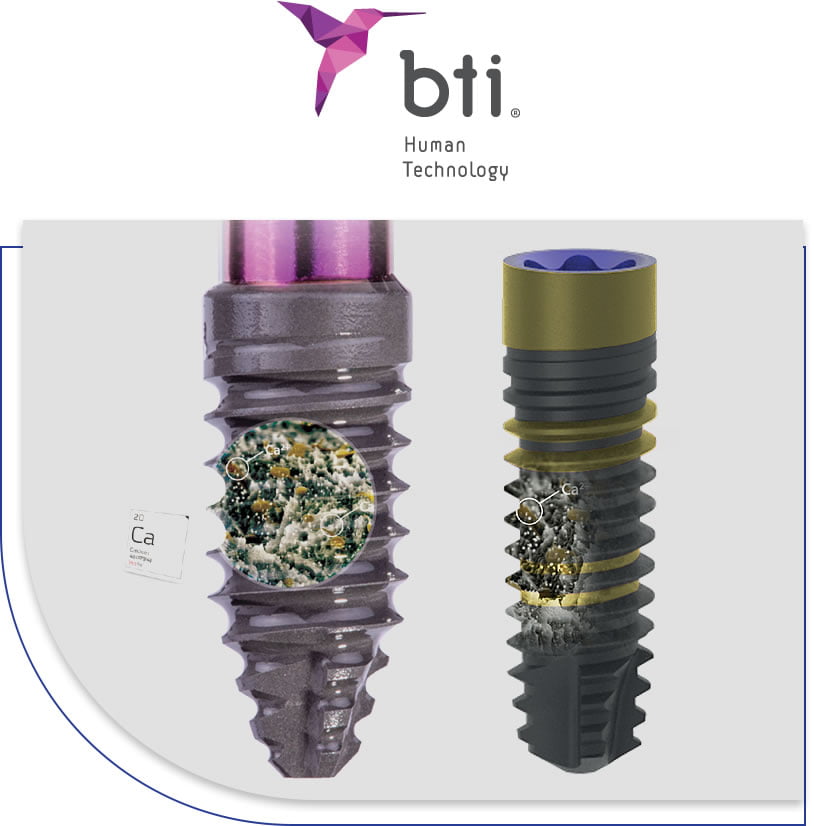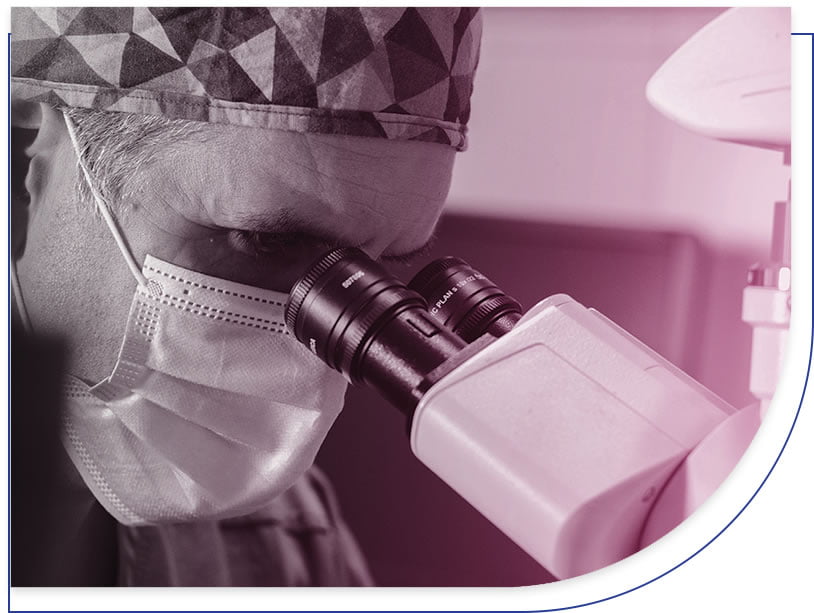BTI designs and manufactures the most versatile dental implant system on the market, a system that adapts to all bone conditions of the patient. BTI has developed the UnicCa® surface, chemically modified with calcium ions to improve osseointegration.
Various prosthodontic platforms depending on the prosthetic solution we want to obtain and various implant sizes depending on the bone substrate we have. The implant system adapts to the residual bone volume of your patient.
Horizontal atrophy
Narrow implants (3.0) for provoking ridge expansions and increasing the volume of the bone substrate without having to perform less predictable surgeries.
Vertical atrophy
SHORT and EXTRA-SHORT implants allowing to perform surgeries in maxillary regions with a lack of alveolar bone height.


BTI is a company which is largely focused on the research and development of new solutions in the area of biomedicine. The research carried out has a clear translational component, seeking to apply the knowledge acquired in the laboratory to daily clinical practice, with the aim of improving patient care and quality of life.
The quality and thoroughness of the research developed by the company is endorsed by the publication of its results in the most important international scientific journals.
BTI Biotechnology Institute was founded in 1999 by Dr. Eduardo Anitua, President and Chief Scientific Officer of the company and recently named as the most influential Spanish researcher in the world in Dentistry according to the Stanford University ranking.
Smart SOLUTIONS for your success!